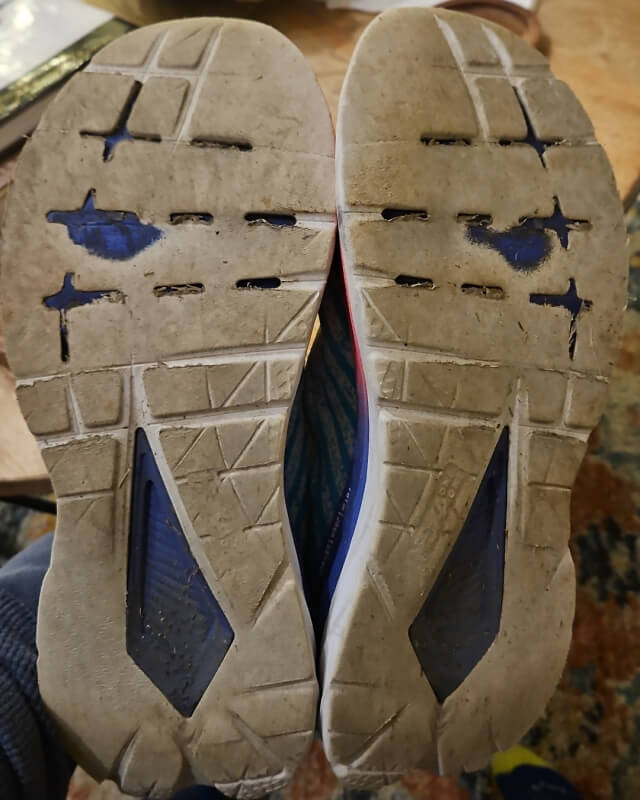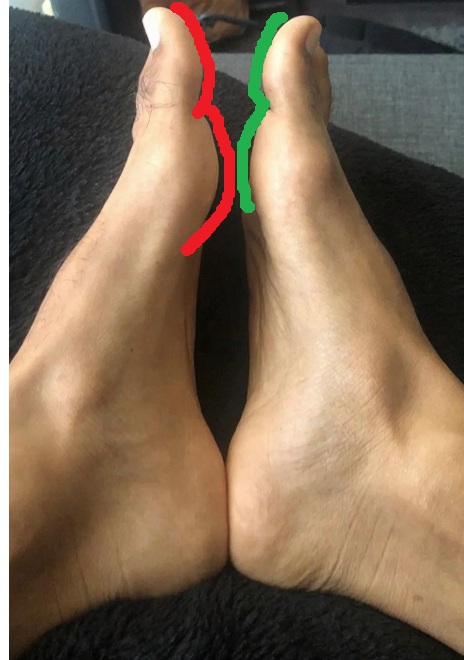Your basket is currently empty!
- When there’s a sale
- When there’s a new colourway
- When there’s a new model
- When you need cheering up
Only joking… But really, when SHOULD you buy a new pair of running shoes? After running 500 miles in a pair is a common number thrown around. But that’s a rather broad figure, and an average across all the types of runners and shoes out there. More durable, higher stack shoes can give you 800+ miles of running. And super shoes only have around 150-300 miles, before the propulsive benefits of their carbon plate wear off.
The following is a list of the most commons signs that a pair of shoes need replacing:
1. Worn outsole – When the outsole layer of the shoe has worn away, based on the area where your foot lands the most. For example, if you’re a fore foot striker, the front area of the outerlayer will likely wear away first, showing a different coloured midsole:

I’ve seen some people even wear a hole right through the midsole to the insole, before chucking their shoes away! I don’t recommend leaving it that long. Unless you’re one of the lucky few who are invincible to niggles and pains, and could even run in a pair of Crocs.
2. Starting to get shin pain? If the outsole hasn’t shown much wear, but the shoe’s started to give you shin pain or a niggle around the feet, this could be a sign that you’ve worn your shoes out. Don’t confuse achiness from a tough run with needing to replace your shoes though. At least try them on 2-3 short runs before deciding if it’s the shoes or your training.
3. Loss of bounce – If you bought a premium pair of trainers, you may have ones that were quite bouncy for the first 100 or so miles. A loss of bounce is a sign that a shoe may be on it’s way out, or that it may cause niggles. But usually, you can get another few hundred miles out of a shoe after it’s lost its initial bounce. But if you like having a bounce in your step, buy a new pair, and relegate your “old”bounceless” pair for walking in.
4. Hole in the upper – Not always a sign that you need to replace your shoes straight away. But if you have a hole where your big toe is, this can be a sign that you’ve done a lot of miles, or that the durability of the upper is poor. If the shoe is lightweight, the uppers of shoes tend to be thin for improved weight and comfort.

However, if your shoes tend to get a hole in the upper often, this could be a sign that you have an hyperextended big toe ->
Can you think of any more signs that a pair of shoes are on their way out? Let us know on our channels.
